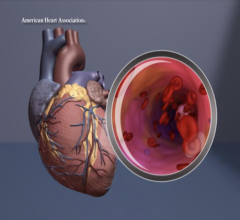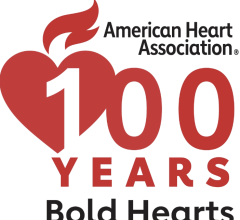
July 1, 2022 — Most children and adolescents living in the U.S. have suboptimal scores for cardiovascular health (CVH), according to the first study to use the American Heart Association’s new “Life’s Essential 8” metrics and scoring algorithm for quantifying CVH levels in adults and children. Overall, under 30 percent of 2-19-year-olds had high CVH. The proportion of children with high CVH declined markedly with older age: 56 percent of 2-5-year-old children had high CVH, compared with 33 percent of 6-11-year-olds and 14 percent of 12-19-year-olds. Findings were published in the journal Circulation.
“We found that among U.S. children, scores were lowest for the diet metric, which is comparable to what we saw in adults,” said senior author Amanda Marma Perak, MD, a cardiologist at Ann & Robert H. Lurie Children’s Hospital of Chicago and Assistant Professor of Pediatrics at Northwestern University Feinberg School of Medicine. “Individuals and families who improve their eating patterns can markedly improve their total cardiovascular health, even independent of weight change. In addition to families’ efforts to improve, we also need policy-level support for better diets, such as subsidies for fruit and vegetable production or making healthier foods more readily available and removing sugar-sweetened beverage options in schools.”
The updated CVH definition includes eight components – sleep duration, a newly added metric, plus refined versions of the original seven metrics including diet, physical activity, nicotine exposure, body mass index (BMI), blood lipids, blood glucose, and blood pressure. For this study, researchers used data from the National Health and Nutrition Examination Surveys (NHANES) from 2013 to 2018. There were 13,521 adult and 9,888 child participants, representing over 201 million adults and over 74 million children in the U.S. Only three CVH metrics (diet, physical activity and BMI) were available in NHANES for all children ages 2 to 19 years. More metrics were added with increasing age – lipids starting at age 6 years, blood pressure starting at age 8 years, nicotine and glucose at age 12 years and sleep at age 16 years.
“Maintenance of higher cardiovascular health at all ages is associated with extremely favorable health outcomes,” said Dr. Marma Perak, who was the pediatric expert for the simultaneously published American Heart Association Presidential Advisory that redefined the concept of CVH through the new metrics. “Children with high CVH have lower burdens of subclinical cardiovascular disease in mid-life. And for children who manage to maintain high CVH into late adolescence or young adulthood, their risk for premature clinical cardiovascular disease events over the next 30 years is extremely low. Ultimately, the new measures of CVH will allow clinicians and scientists to track changes with more precision so that they can intervene earlier and set kids on a healthier path into adulthood.”
Research at Ann & Robert H. Lurie Children’s Hospital of Chicago is conducted through Stanley Manne Children’s Research Institute. The Manne Research Institute is focused on improving child health, transforming pediatric medicine and ensuring healthier futures through the relentless pursuit of knowledge. Lurie Children’s is ranked as one of the nation’s top children’s hospitals by U.S. News & World Report. It is the pediatric training ground for Northwestern University Feinberg School of Medicine.
For more information: www.luriechildrens.org


 July 24, 2024
July 24, 2024 








